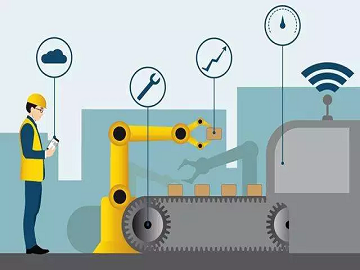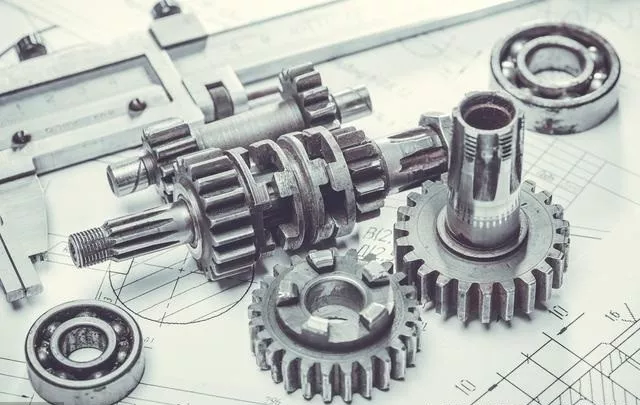Why does the predictive maintenance program fail?(Part 1)
Alpha Ind. Tech.
Why does the predictive maintenance program fail?
Introduction
Many facts over the past few years have indicated that significant changes are taking place in the field of predictive maintenance, and more and more companies are choosing to outsource their predictive maintenance projects. While many factories use a 20:1 return on investment as a standard, there are still other factories that ridicule that dataloggers are now a “dust collector” for them.
Although the concept of predictive maintenance is now widely accepted and well known, and its potential benefits are generally accepted, but many factories have not succeeded in turning existing predictive maintenance techniques into practice. For this state, we can't help but ask: "When other factories fail, why do some factories can be successful?"
Facing a recession and cutting maintenance staff, we will be asked to do better again. This means we need to think about how the current and future can be maintained through new internal processes or external assistance, and how to repair it smarter and more effective. We face the challenges of an emerging economy, and we need to implement practices, restructuring, investing in infrastructure, etc., and prepare for the timing of a better economic turnaround.
In the coming period, we will also share more articles to explain the reasons for the success or failure of predictive maintenance, from different perspectives, such as management, technology and finance. Regardless of whether you decide to use this information to reinforce or restart internal processes, determine which type of training is most suitable, or outsource PREDICTIVE MAINTENANCE, or a combination of these, we hope that we can provide enough useful information to make your efforts turn into success. Some of the topics covered in this article will be discussed in depth in the future.
Lack of vision
No project can be successful if it is not well conceived. If implemented well, predictive maintenance programs can change the maintenance culture, philosophy and workflow of the maintenance department. This is not just adding a new technology or a new tool, but using a completely different way or strategy to maintain the device.
The benefits of implementing this strategy are both measurable. These benefits include increased uptime, reduced failures, shorter planned downtime, fewer preventive maintenance etc., and in the end, the equipment is running more efficiently. Failure to direct the original maintenance culture to a new concept and test the benefits will ultimately lead to the failure of predictive maintenance projects. Adopting new technology without changing the original maintenance strategy will not produce the expected benefits.
Don't understand why you want to use new tools
Many factories have purchased new technology tools, such as vibration temperature data collectors or laser alignment tools, which take the time and money to learn how to use these tools, but spend little time understanding why they must be used. For example, a factory can detect the early wear of the pump bearings through vibration analysis techniques. Although there are no indications that the bearings of the pump are worn, the factory has replaced the bearings according to their preventive maintenance schedule.

In another factory, the vibration analyst is very good at detecting the mechanical failure of the factory, but he dares not tell his supervisor all the problems he found, because he is worried that the supervisor may be angry when he knows that all equipment need to be repaired! Both of situations indicate that this technology is only used as a tool and not as an overall strategy in these two factories.
Failed to verify
Even in factories where predictive maintenance techniques are used properly, I often see that PREDICTIVE MAINTENANCE ultimately fails because its achievements are not properly documented. In other words, the factory has changed their philosophy, using the predictive maintenance mode as the maintenance concept, the correct application of technology to shorten the preventive maintenance work and minimize the catastrophic failure, but they did not fully record the efficiency of predictive maintenance. Therefore, although predictive maintenance is useful inside the maintenance department, they have no data to prove to others. Unfortunately, they may see that their projects are cut by managers due to budget tightening. In another case, the people who handle predictive maintenance leave and no one picks up the work.
Lack of consistency
Another factor that has led to the failure of predictive maintenance projects is the lack of consistency. There are many reasons for the lack of consistency. No suitable person, lack of proper training, departure of technical staff, changing the direction/technical direction of the project, lack of clear objectives at the start of the project, and ultimately lack of consistent monitoring to assess the entire project benefits and so on. The start and stop of these mistakes increase the chaotic process, always leading to a lack of confidence among workers, who believe that the “transformation” of corporate investment quickly returns to the old model.
Another negative effect of lack of consistency is that the factory is not allowed to "evolve" into an active maintenance mode. For a brief review of the maintenance model, there are four levels of maintenance practices: after-the-fact maintenance, preventive maintenance, predictive maintenance and proactive maintenance. In the after-the-fact maintenance mode, the factory uses a technique such as vibration analysis to test and diagnose the faulty problem equipment that they know. Preventive maintenance mode means that the maintenance department regularly checks the equipment according to the maintenance plan, but does not perform maintenance according to these inspections. In the predictive maintenance mode, the main maintenance work is based on the results of the test to reduce unnecessary regular preventive maintenance and prevent catastrophic failure.

The next phase of evolution is the proactive maintenance model, based on the plant's sufficient equipment history data and failure modes to determine how to extend the life of the equipment, replace different components or eliminate inherent design flaws. A more efficient factory is needed to achieve these goals.
Let's look at the basic differences between these maintenance modes. You will notice that the equipment will appear in various forms of damage mode when the factory implements the after-sales maintenance mode. It seems very random; the factory maintenance personnel who implement the after-sales maintenance mode are generally busy, and They will think they are always busy adapting to the new rules! One of the preventive maintenance modes is to pay more attention to the equipment. In the predictive maintenance mode, the main performance is to reduce preventive maintenance work, extend machine life and reduce unplanned downtime. In the proactive maintenance mode, the main performance is to eliminate or redesign faulty equipment to make the plant run more smoothly and effectively. To achieve this goal, it is very important to maintain consistency over the long term.


